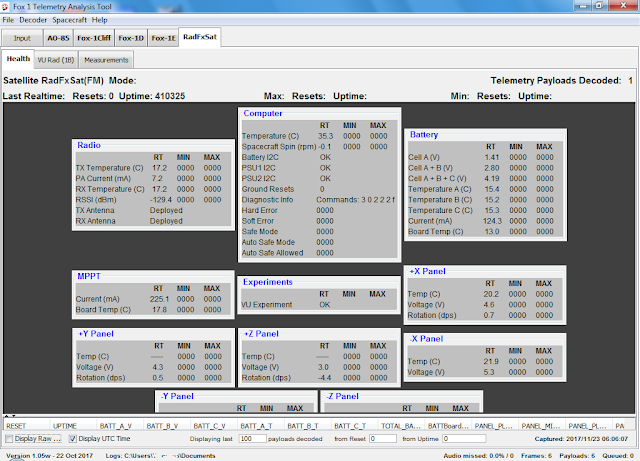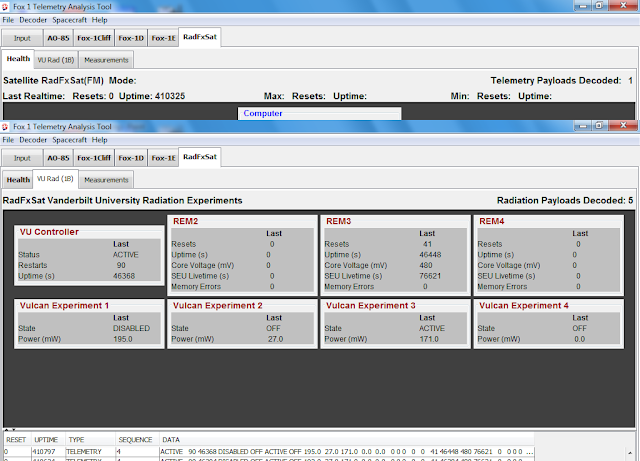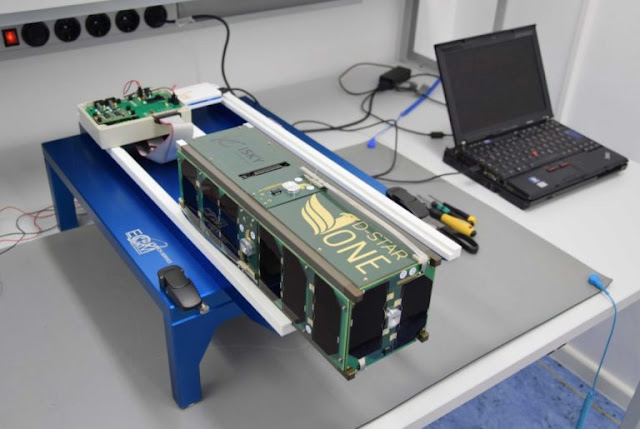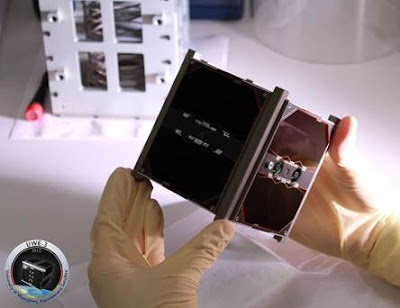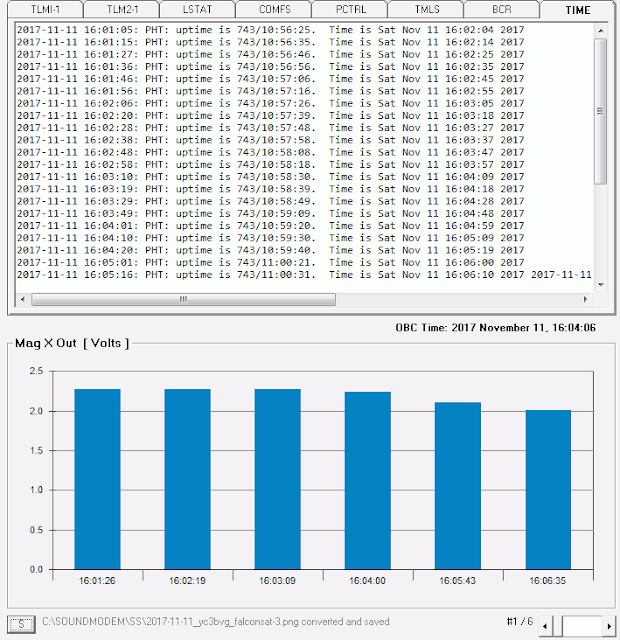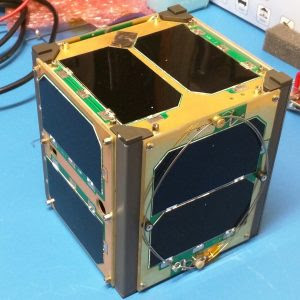
Home » Archives for November 2017
MAI-75 ARISS-SSTV in December

Slow Scan Television (SSTV) images transmitted from the International Space Station and other ARISS supported satellites
Images will be downlinked by ISS on 145.800 MHz.
International Space Station
Looks like the MAI-75 folks have scheduled some SSTV activity during specific periods each day from Dec 6-8. The times correlate to a small number of passes each day in range of Moscow.
Dec 6, 2017
Setup and power on – 13:40-14:20 UTC
Power off – 17:05-17:15 UTC
Dec 7, 2017
Power on – 13:45-13:55 UTC
Power off – 17:30-17:40 UTC
Dec 8, 2017
Power on – 14:05-14:15 UTC
Launch of D-Star ONE scheduled for November 28, 2017 ( More Updates )

The cubesat D-Star One, the first German private cubesat will ship a D-Star communication capability should be launched on November 28, 2017.
D-Star One is a 3U CubeSat which is equipped with four identical radio modules with D-Star capabilities, all being operated in a half-duplex mode.
Two modules are used for telemetry and telecomand and operate on identical frequencies. Telemetry can be received on 435,7 MHz, the format will be disclosed after launch. Both modules receive, and both modules answer. To prevent information loss, they answer after each other. So each telemetry frame is repeated twice. Both modules have a D-Star Voice-Message Beacon, but it is only activated for one module during LEOP. The Beacon is repeated once in a minute.
The other two modules are dedicated to the radio amateur community. Both modules have the same frequencies, so one of them will be powered down as long as the other one shows no degradation effects. The downlink frequency is 435.525 MHz and the uplink frequency is 437.325 MHz. Also here half-duplex mode is applied. The modules are configured to work as D-Star repeaters, so they retranslate the received d-star frames on the downlink frequency. They also have a D-Star voice beacon signal.
All modules are operated in a power save mode. This means that they are in idle for 40 seconds and then in receive mode for 20 seconds. Once a signal has been received, the modules switch to receive mode for five minutes. So it might be necessary to „ping“ the satellite a couple of times until an answer is received.
The radio characteristics are:
- DStar
- Mount frequency: 437.325MHz
- Frequency of descent: 435.525MHz
- RF power: 800mW
- Code: DGP1GOS
- Telemetry
- Frequency of descent: 435.525MHz
Orbit parameters and TLE:
The target orbit for D-Star ONE spacecraft is a circular sun synchronous orbit with an altitude of approx. 585km
Prelimenary TLE details are here, updates comming.
D-Star ONE 1 99999U 17332.34739815 .00000000 00000-0 00000-0 0 00004
2 99999 097.7600 140.1500 0012940 103.0900 156.2816 14.93956737000011
Launch Time from Baikonur cosmodrome ( Time in UTC )
Tomorrows (based on UTC) live launch information Maybe live coverage via (link: http://www.tv-tsenki.com/live.php) tv-tsenki.com/live.php
A WWW site is being set up with additional information: http://www.d-star.one
Links :
source:
EcAMSat QSL Cards

EcAMSat QSL Cards
EcAMSat QSL Cards will change over time.
Submit new packets often to collect them all! to http://ecamsat.engr.scu.edu/beacon/
EcAMSat Strong Signal over Indonesia ,Orbit #8621 09:41 UTC

decoding EcAMSat with Soundodem v 0.97b , HDSDR and RTLSDR dongle .
Raw data on Aprs.fi https://aprs.fi/?c=raw&limit=50&call=KE6QLL&view=normal&first=3529222537
UWE-3 News: Celebrating 4 years of operation in space

On 21st of November 2017 UWE-3 celebrated 4 years in space and is still running without any significant failures. The daily received UWE-3 beacons report its good health condition, including the nominal status of the batteries.
UWE-3 in cleanroom shortly before launch 2013.
During these last four years we received an outstanding support from the Radio Amateur Community from all over the world, which is highly appreciated. We would like to express our special thanks to: DK3WN, Rainer, PE0SAT, SP7THR, EU1XX, JA1GDE, JA6PL, G7GQW, ON4HF, LU4EOU, DL8MCO, JA5BLZ, CU2JX, R4UAB, VK5HI, JA0CAW, IW0HLG, JO1PTD, YC3BVG, DB1VQ, JA6DHC, ZL4JL, VK2FAK, JE9PEL, JH4XSY, JF1EUY, N2ACQ, PY4ZBZ, CX8AF, DG4YDF, LU7DRR, PD0OXW, PA2EON, IK8OZV, ES5EC, K4KDR, ZR1ADC, JE1CVL, EA7ADI, EA1JM, PY2SDR, VE7CEW, PA3GUO, ES5TO, SM0TGU, EA4SG, DL1MX, W6YRA.
THANK YOU ALL FOR YOUR EXTRAORDINARY SUPPORT!
THANK YOU ALL FOR YOUR EXTRAORDINARY SUPPORT!
Yours sincerely,
UWE-3 Team.
UWE-3 Team.
RadFxSat (Fox-1B) is scheduled for launch 09:47

RadFxSat (Fox-1B) is scheduled for launch this morning at 1:47am PST (09:47 UTC) from Vandenberg Air Force Base, California! Please join us here for a live blog of the launch and initial reception reports.
Live video of the launch will be available on the NASA TV Media channel (NTV-3), starting at 09:15 UTC.
Preliminary TLEs are:
More information about the launch and early operations can be found at : https://yc3bvg.blogspot.com/2017/11/ready-for-radfxsat-fox-1b.htmlELaNa 14
1 00000U 17017A 17317.46018518 -.00000000 00000-0 00000-0 0 9999
2 00000 97.6969 249.5697 0258300 235.3028 178.8186 14.79656332 06
A United Launch Alliance Delta 2 rocket will launch the first spacecraft
in the Joint Polar Satellite System, NOAA's next-generation series of
polar-orbiting weather observatories. The rocket will fly in the 7920
configuration with nine solid rocket boosters and no third stage.
Fox-1B (RadFxSat)
AMSAT, Vanderbilt University, USA
http://www.amsat.org/countdown-to-launch-radfxsat-fox-1b/
Up 435.250MHz/Down 145.960MHz, FM CTCSS 67.0Hz
CP-7(DAVE)
Cal Poly Picosatellite Project (PolySat), USA
http://space.skyrocket.de/doc_sdat/cp-7.htm
437.150MHz 9k6 FSK, CW
EagleSat-1
Embry-Riddle Aeronautical University, USA
ttp://prescott.erau.edu/about/labs/axfab-eaglesat/
437.645MHz 1k2 AFSK
RadFxSat Launch Delayed, Now No Earlier Than November 14th

United Launch Alliance (ULA) announced this afternoon that the launch of the Delta II rocket carrying RadFxSat has been delayed due to a faulty battery on the booster. The launch is now scheduled for no earlier than Tuesday, November 14th. Stay tuned to the AMSAT-BB, AMSAT News Service, and the AMSAT web site for further details.
RadFxSat ( Fox-1b )
Ready for RadFxSat (Fox-1B)

Introduction
RadFxSat (Fox-1B) is scheduled for launch on November 10, 2017. RadFxSat is one of four CubeSats making up the NASA ELaNa XIV mission, riding as secondary payloads aboard the Joint Polar Satellite System (JPSS)-1 mission. JPSS-1 will launch on a Delta II from Vandenberg Air Force Base, California.
RadFxSat ( Fox-1B ) Cubesats
RadFxSat is a partnership with Vanderbilt University ISDE and hosts four payloads for the study of radiation effects on commercial off the shelf components. RadFxSat features the Fox-1 style FM U/v repeater with an uplink on 435.250 MHz (67.0 Hz CTCSS) and a downlink on 145.960 MHz. Satellite and experiment telemetry will be downlinked via the “DUV” subaudible telemetry stream and can be decoded with the FoxTelem software.
Launch and Early Orbit Phase (LEOP)
RadFxSat will launch at 01:47 PST (09:47 UTC) on November 10, 2017 from Vandenberg Air Force Base, California. At this time, pre-launch Keplerian elements are not expected to be available. However, based on the Local Time of the Ascending Node (LTAN) of the primary payload, 13:30, stations should expect to have their initial ascending passes starting around noon local time. The estimated time of “First Veronica,” the initial beacon after deployment, is 12:07 UTC. Due to the tight constraints on the primary payload deployment, the secondary payloads may be delayed slightly, so this should be considered the soonest the transmitter will be enabled. Orbital elements will be published as soon as they are available on the AMSAT website. Stations in Europe, South America, and North America should point your beams south and have FoxTelem running while awaiting the initial post-launch Keplerian elements.
Participation in telemetry collection by as many stations in as many parts of the world as possible is essential as AMSAT Engineering looks for successful startup and indications of the general health and function of the satellite as it begins to acclimate to space.
If you are capturing telemetry with FoxTelem please be sure that “Upload to Server” is checked in your settings, and that your “Ground Station Params” are filled in as well. You can help AMSAT and everyone waiting to get on the air with RadFxSat tremendously by capturing RadFxSat telemetry.
About 60 minutes after deployment, or 140 minutes after launch, the satellite will start up in Beacon Mode. In this initial mode, the transmitter is limited to 10 seconds on time and then will be off for two minutes. For those of you capturing telemetry, that means that you will only see Current frames and no High or Low frames. The High and Low frames are truncated as it takes just over the 10 second limit to send two frames. Veronica may also be cut off before she gets to say her whole ID string as the full ID, “RadFxSat Fox-1B Safe Mode,” is a bit longer than the approximately 3.5 seconds she has in Beacon Mode. If the voice ID is cut off, the satellite is still in Beacon Mode.
If AMSAT Engineering is seeing nominal values from the telemetry you gather, the satellite will be commanded from Beacon Mode to Safe Mode on the first good pass over the United States. In Safe Mode, the satellite transmits a full two frames of telemetry (one Current frame followed by, and alternating each ID cycle, a High or a Low frame). Veronica now has time to make the whole ID announcement in Safe Mode.
The on-orbit checkout procedure for RadFxSat is similar to Fox-1A/AO-85 and could be completed in as little as a few days if users cooperate. It is very important, and good amateur operating practice, to refrain from using the transponder uplink so the on-orbit tests can be performed, including when the satellite is switched into Transponder Mode for testing.
AMSAT will make it broadly known when the tests are complete and the transponder is available for all to use. If you hear someone on the transponder, please do not assume that it is open for general use – check AMSAT’s website, Facebook, and Twitter before transmitting to be sure you do not interfere with testing.
AMSAT asks all satellite operators to contribute just a little bit of your time by gathering telemetry, not using the transponder uplink, to help complete the last few days of getting RadFxSat operating for the amateur radio community.
Lots of hams put thousands of volunteer hours of their time into making RadFxSat happen. Just like any ham radio project you might undertake, AMSAT builds satellites. AMSAT volunteers do it because they like to, and when they are done, AMSAT freely shares their project with hams everywhere as is the spirit of amateur radio.
Thank you very much and see you on the bird!
Radio Programming Chart
| RadFxSat (Fox-1B) Doppler Shift Correction | ||
| Memory | Your Transmit Frequency
(With 67 Hz Tone)
| Your Receive Frequency |
| Acquisition of Signal (AOS) | 435.240 MHz | 145.960 MHz |
| Approaching | 435.245 MHz | 145.960 MHz |
| Time of Closest Approach (TCA) | 435.250 MHz | 145.960 MHz |
| Departing | 435.255 MHz | 145.960 MHz |
| Loss of Signal (LOS) | 435.260 MHz | 145.960 MHz |
Frequencies are subject to change after launch.
Subscribe to:
Comments (Atom)Template Responsive Design




